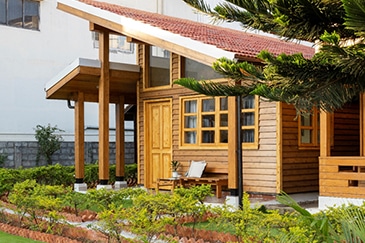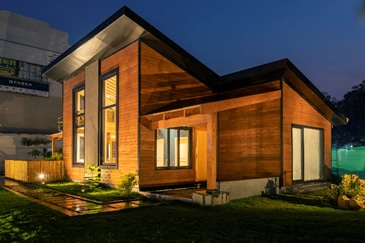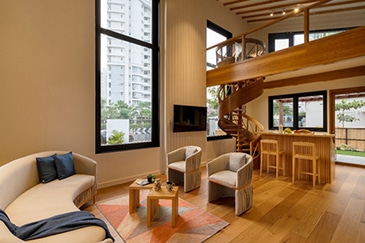In recent times, wood as a building material has been garnering immense popularity for residential and non-residential projects for being a natural, diverse and sustainable raw material. Builders and architects have been slowly accepting the use of wood in their projects due to its engineering benefits. .
Here are some key biophilic benefits of using wood as a building material in all residential and non-residential buildings for occupants:

Stress Reduction
Research indicates that wood is known to improve the quality of air and create a built environment. This is one of the causes for it reducing stress levels in people along with maintaining their blood pressure levels and heart rate. It is also credited to reduce pain perception, making it quite the driver of good.
Comforting Atmosphere
Various researchers have also found that wood as a material makes us feel closer to nature, which in turn, creates a cozy and comfortable environment around us. We are human beings, with a natural tendency to explore the outdoors, but often, our lifestyles make fulfilling this wish difficult. Therefore, using wood helps form the desired connection with nature, indoors. Commercial establishments adorned with wood have been found to boost innovation, energy and comfort, thus fueling the overall productivity of employees.
Aided Recovery
A number of evidence-based studies have inferred that wood indeed, plays a critical role in healing us. The reason, yet again is – the connection of wood and nature. This is why, hospitals and wellness retreats with wooden interiors are known to help with an expedited recovery process.

Cognitive Improvement
Not only does wood positively impact physical as found by vast research, but also mental wellness. One important benefit to an occupant of a building with wooden interiors is the improvement of cognitive abilities – attention span, focus and creativity, higher levels of concentration, and augmented productivity.

Regulated Temperatures
When the outside temperature is cold, a structure built with wood is known to retain better heat. Conversely, it prevents itself from overheating during a warmer climate and keeps humidity at bay. With this, not only is the environment stable, pleasant and likeable, but the reliance on heating and cooling appliances also reduces, thereby limiting one’s expenditure.
Sustainability
Coming to the most important benefit of them all, wood buildings are key contributors to protecting our planet. At a time when reducing carbon footprint is the need of the hour for a safer With its lightweight properties, wood stores carbon dioxide from the environment, and when sourced in a sustainable manner, forests that are well taken care of, regrow.

With all of the above benefits and a successful battle against climate change, we can be confident about creating a better tomorrow for the planet and ourselves via the application of this highly renewable building material.


